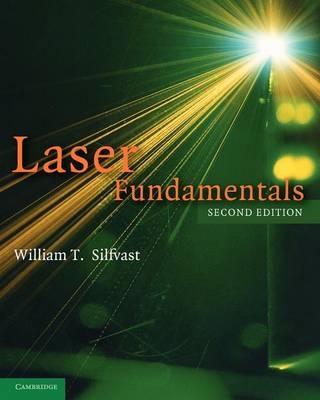
Laser Fundamentals
Cambridge University Press (Verlag)
978-0-521-54105-3 (ISBN)
Laser Fundamentals provides a clear and comprehensive introduction to the physical and engineering principles of laser operation and design. Simple explanations, based throughout on key underlying concepts, lead the reader logically from the basics of laser action to advanced topics in laser physics and engineering. Much new material has been added to this second edition, especially in the areas of solid-state lasers, semiconductor lasers, and laser cavities. This 2004 edition contains a new chapter on laser operation above threshold, including extensive discussion of laser amplifiers. The clear explanations, worked examples, and many homework problems will make this book invaluable to undergraduate and first-year graduate students in science and engineering taking courses on lasers. The summaries of key types of lasers, the use of many unique theoretical descriptions, and the extensive bibliography will also make this a valuable reference work for researchers.
William Silfvast received a BSc degree in both physics and mathematics and a PhD in physics from the University of Utah. In 1990, he joined the faculty of the University of Central Florida in Orlando, Florida where he was Professor of Physics and Electrical Engineering as well as a member of the Center for Research and Education in Optics and Lasers (CREOL). In 1999 he also became a Professor of Optics at the School of Optics. He is presently Emeritus Professor of Optics. He is a Fellow of the American Physical Society, the Optical Society of America and the IEEE. He has carried out pioneering work in the fields of metal vapor lasers, recombination lasers, photoionization-pumped lasers, laser plasmas, and EUV lithography. He is the author of over 100 technical papers and holds more than 30 patents.
1. Introduction; Part I. Fundamental Wave Properties of Light: 2. Wave nature of light - the interacting of light with materials; Part II. Fundamental Quantum Properties of Light: 3. The particle nature of light - discrete energy levels; 4. Radiative transitions and emission linewidth; 5. Energy levels and radiative properties of molecules, liquids (organic dyes) and solids (dielectrics and semiconductors); 6. Radiation and thermal equilibrium - absorption and stimulated emission; Part III. Laser Amplifiers: 7. Conditions for producing a laser - population inversions, gain, and gain saturation; 8. Laser oscillation above threshold; 9. Requirements for obtaining population inversions; 10. Laser pumping requirements and techniques; Part IV. Laser Resonators: 11. Laser resonator modes; 12. Stable laser resonators and Gaussian beams; 13. Special laser cavities; Part V. Specific Laser Systems: 14. Laser systems involving low density gain media; 15. Laser systems involving high density gain media; Part VI. Frequency Multiplication of Laser Beams: 16. Frequency multiplication of lasers and other non linear optical effects.
| Erscheint lt. Verlag | 21.7.2008 |
|---|---|
| Zusatzinfo | Worked examples or Exercises; 63 Tables, unspecified; 285 Line drawings, unspecified |
| Verlagsort | Cambridge |
| Sprache | englisch |
| Maße | 203 x 254 mm |
| Gewicht | 1360 g |
| Themenwelt | Naturwissenschaften ► Physik / Astronomie ► Optik |
| Technik | |
| ISBN-10 | 0-521-54105-0 / 0521541050 |
| ISBN-13 | 978-0-521-54105-3 / 9780521541053 |
| Zustand | Neuware |
| Haben Sie eine Frage zum Produkt? |
aus dem Bereich


